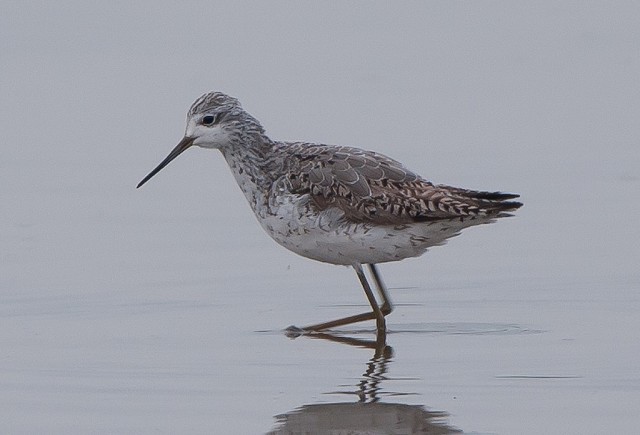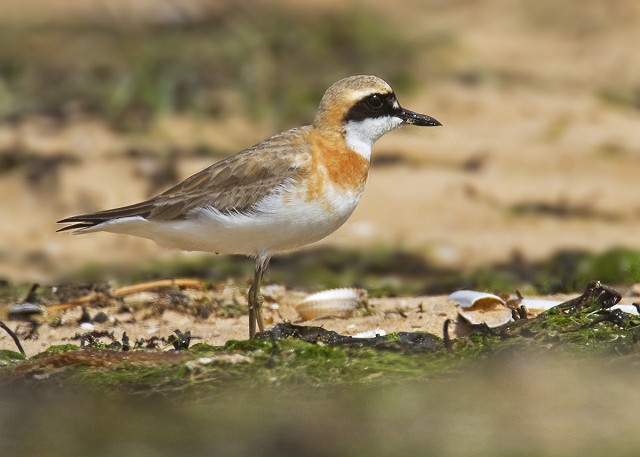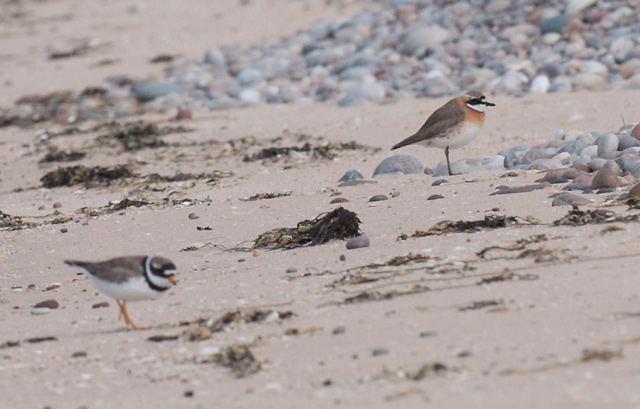Once the long-anticipated months of April and May come to an end, it is easy to fall into the trap of thinking that the ensuing summer months represent a tedious dearth of bird movement. Yet it is often forgotten that many waders start their return migration very shortly after northbound passage ends and this can lend more than enough interest over the summer months. Waders tend to have a rushed breeding cycle: the young soon grow independent and this enables the adults to set off early on a leisurely return. Birds that have failed to breed or even pair up are generally the first to move off, followed by post-breeding adults, and vagrant waders over the summer months will be such unattached, wandering birds. The reproduction of many waders that we see passing through is restricted by the relative brevity of summer on their breeding grounds in and around the Arctic, so adults are not away for long and are later followed by their offspring.
Green Sandpiper could be considered the true herald of autumn migration: the first individuals return in early June, only one month after the last spring stragglers of the species, and even occur alongside other waders heading north at times. These early arrivals, representing individuals that have failed to breed, are followed by an increasing volume and diversity of birds as the weeks and months pass. As waders can move by both day and night there is constant reshuffling of birds, and checking your local sites in the early hours following inclement weather, or in the evenings, can offer high odds of coming across something special. Migrant waders can be found anywhere from the well-known coastal wetland reserves to your local gravel pit or reservoir and numerous species such as Green and Common Sandpiper, Whimbrel, Black-tailed Godwit, Greenshank and Ruff should be quite easy to dig out.
Wood Sandpipers, which begin moving through in June, are particularly fond of freshwater marshes and sewage farms, while small gatherings of Spotted Redshank tend to build on marshes and estuaries from around the same time. Curlew Sandpiper pushes through from the latter half of July, tailed by the first main waves of Little Stint; both of these species will quite happily drop in almost anywhere, even feeding on the concrete banks of a reservoir, though neither could be described as common. It is worthwhile making an effort to catch up with the earliest appearances of these birds, while they retain much of their breeding plumage. Late August onwards sees your chances of coming across these sought-after species increase as juveniles add to the swelling numbers of refuelling birds. These youngsters depart the breeding grounds much later than their parents and their inexperience means that they are more inclined to drop in at less expected sites.

Wood Sandpiper (Photo: John Whitting)

Curlew Sandpiper (Photo: Lewis Thomson)

Spotted Redshank (Photo: Simon Johnson)
The period of wader movement over the summer months offers the hope of scarce and rare visitors from North America and Siberia, with Pectoral Sandpiper being one of the more likely prizes for time spent grilling suitable habitat. Temminck's Stint is liable to stop off from July onwards along with the odd Buff-breasted Sandpiper, as is White-rumped Sandpiper, and keeping an eye on beaches and gatherings of Calidrids in the west might well come up trumps. Records show July to be one of the best months for Marsh Sandpiper, a bird that is seemingly as likely to turn up inland as on the coast.

It's well worth checking Dunlin flocks for White-rumped Sandpipers in July and August – this adult was in Lancashire in July 2007 (Photo: Gavin Thomas)

Marsh Sandpiper is a classic July bird. This one was at Blacktoft Sands in 2011 (Photo: Martin Standley)
One species surely worth keeping firmly on every birder's radar over the next few weeks is Pacific Golden Plover. Looking back over the records, July and August have together shared the glut of these birds. Picking through flocks of European Golden Plover in the south and east offers the best chance of coming across their particularly elegant counterpart, off-route from its journey to south Asia or Australasia where the species winters. After a patchy run of occurrences in the 1970s and 1980s (when it was still lumped with American Golden Plover as 'Lesser Golden Plover'), Pacific Golden Plover has since become dependable as an annual rarity and East Anglia is perhaps the best region to begin searching for one. As this year has shown, the summer period can be great for pratincoles, and any that turn up later on in the season are particularly likely to turn out to be Black-winged Pratincole. These often mobile birds regularly stay for long periods once here but can quickly move between different areas.

A rare brace: these two Pacific Golden Plovers spent much of July 2011 together in County Derry (Photo: Dermot Breen)
Summer has also traditionally proven to be ripe for finding sand plovers. Greater Sand Plover, which breeds from Turkey and the Middle East to Central Asia, has notched up 16 occurrences to date in Britain, and shows a strong tendency to arrive in June, July and August. Scotland has claimed all birds since 2004, so a more convenient individual for southern birders is perhaps due. Large tidal sites on the south coast such as Keyhaven Marshes (Hants) and Pagham Harbour (W Sussex), the host of Britain's first individual, are arguably due a visit. July and August are even better months for Lesser Sand Plover, and 75% of birds so far recorded have been identified as the eastern form mongolus.

This stunning Greater Sand Plover was at Dornoch in Highland Scotland in June 2011 (Photo: Marcus Conway)

... while this Lesser Sand Plover in Moray/Nairn in July 2013 was seen the next week in County Cork (Photo: Margaret Sharpe)
So, the season is far from over, but this summer has already seen some cracking vagrant waders turn up on our shores; what might be next? It is tempting to suggest that an Oriental might complete the year's set of pratincoles, and a twitchable Red-necked Stint would be a very welcome follow-up to the popular Great Knot at Breydon last week. Britain's first and longest-staying individual at Blacktoft Sands (E Yorks) has since been followed by a further 11 records of this handsome stint, four of these being in Ireland and almost all involving adults either in July or August. Over the last few years, a number of vagrant late-summer Red-necked Stints have also come as tantalisingly close as France, Spain, Sweden, Norway, Denmark and The Netherlands so it is very much a species worth keeping on the radar.
As the pace of return wader movement picks up, time spent out in the field grows ever more worthwhile and rewarding. Visiting gravel pits, reservoirs, estuaries and marshes will pay off sooner or later as waders slowly make their way towards their wintering grounds and that next big one might not be all that far away.

Blast from the past: The last truly twitchable Red-necked Stint was this bird in Cambridgeshire in September 2001. Another is well overdue. (Photo: Steve Blain)

